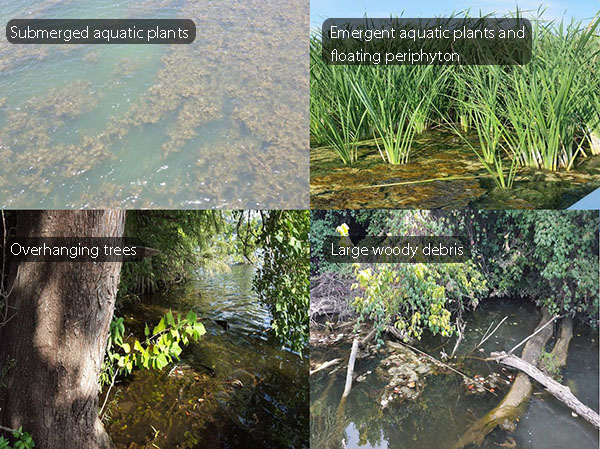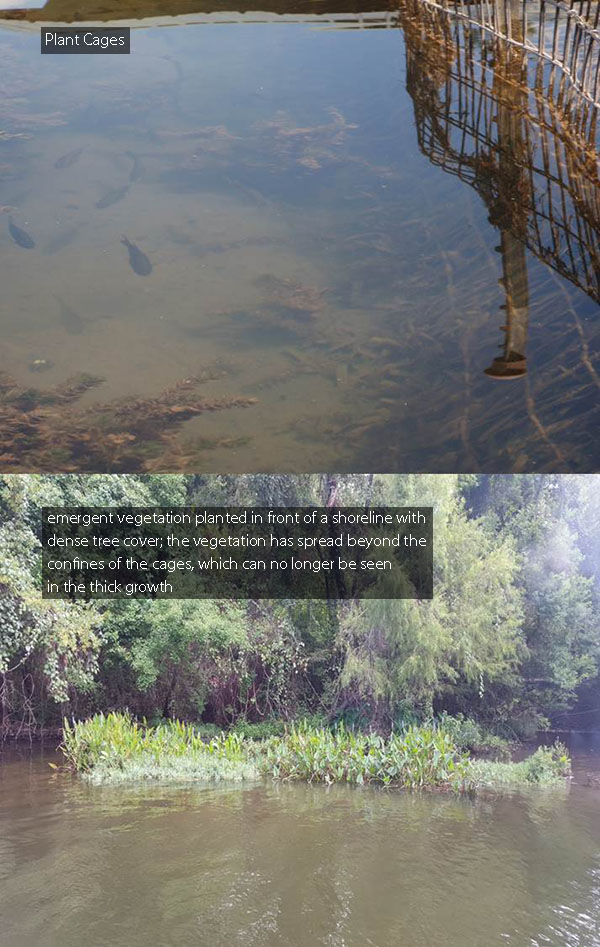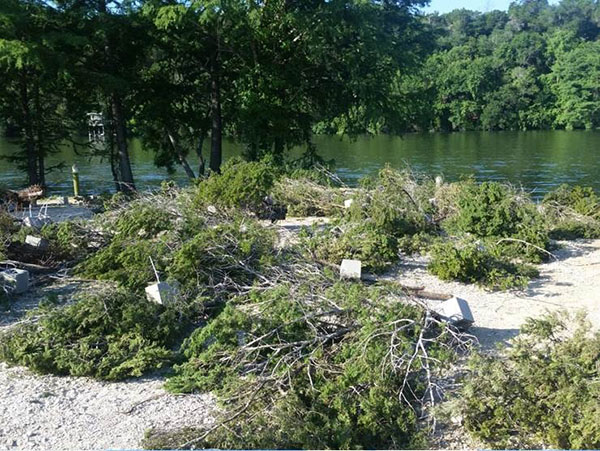How Structured is Your Lake?
Habitat=more fish
In aquatic systems, an important component of the ecosystem is the type and abundance of “habitat” present. Habitat, also referred to as “structure”, are things such as submerged aquatic plants, emergent aquatic plants and floating periphyton, overhanging trees, and large woody debris. These components provide the materials, surfaces, and niches upon which algae and microorganisms colonize, insects can feed and breed, and small and large fish can spawn, feed, hunt, and hide. Together, habitat supports, diversifies, and enhances the food web of aquatic systems.

Examples of Lake Habitat
Loss of habitat=decline in fish
Loss or alteration of habitat components can result in a simplification or collapse of the food web through changes in organisms present or their biomass, aka how big and healthy they are. Loss of habitat can occur through removal of vegetation or natural causes such as storm events.

Examples of things that remove habitat
Restoring Habitat
When habitat is lost, managers can utilize a variety of tools in an effort to restore and enhance an aquatic system for the protection of ecological and biological integrity. The City of Austin has been applying a few techniques toward habitat restoration in Lake Austin. In coordination with the University of North Texas (UNT), we have been planting native aquatic plants in temporary cages. Cages protect the desired vegetation from herbivores such as ducks, turtles, and triploid grass carp. The aquatic vegetation provides the habitat desired by small fish and invertebrates . The plants also serve to diversify the nearshore habitat and serves as “founder colonies” producing seeds and propagules that can spread.

Another common habitat enhancement project involves the sinking of evergreen trees into deep water. Shoreline trees naturally fall into waterways when they die or due to storm events. The process was replicated in Lake Austin for enhancement of deep water (12-20’ depth) habitat by the City, along with Texas Parks and Wildlife Department, the Texas Tournament Zone, and additional volunteers. The green tree leaves are rapidly colonized by bacteria which become a resource for invertebrates and small grazing fish. The tree branches provides the complexity desired by small fishes for hiding, but also serve as refugia for large fishes, and the presence of small fish gives ample feeding opportunities. Essentially, the brush bundles are a buffet line feeding all the residents of the lake!

Brush bundles ready for deployment into Lake Austin. Bundles consisted of typically two cedar trees, with leaves, tied to a cinder block.
Projects such as these are important for aquatic systems that lack a variety of habitats or in cases where managers simply want to enhance and diversify what is already there. We are working to enhance the habitat of Lake Austin as vegetation recovers from the reduction of the non-native invasive aquatic plant Hydrilla. Habitat building projects are common and can be done in lakes, ponds, or reservoirs where one wishes to promote structural diversity. Be sure to follow the links for more information about the importance of habitat, building habitat, and if a fisherman, where to find Lake Austin brush bundles!
Creating Bass Habitat
About Aquatic Habitats
Artificial Structures for Fish Cover
Nature Watch and Ecosystems on the Wayne NFl
Lake Austin -Locations of Fish Attractors
